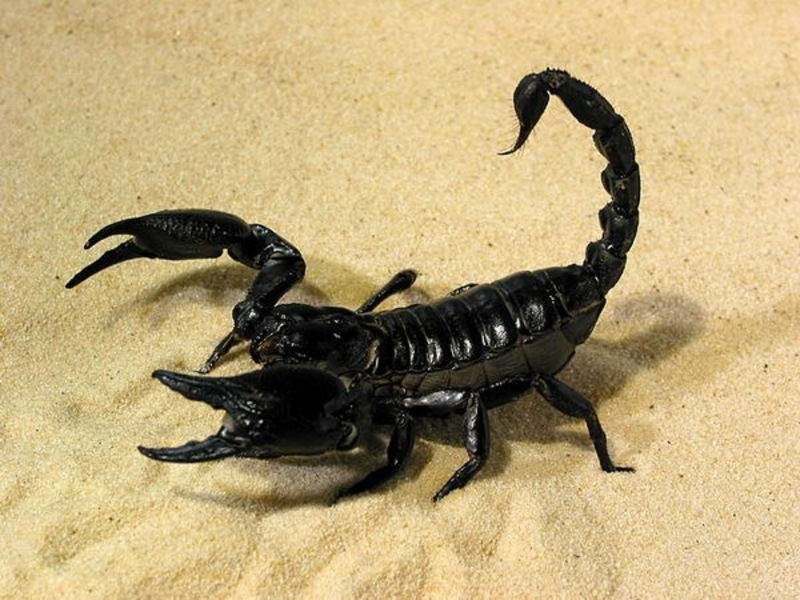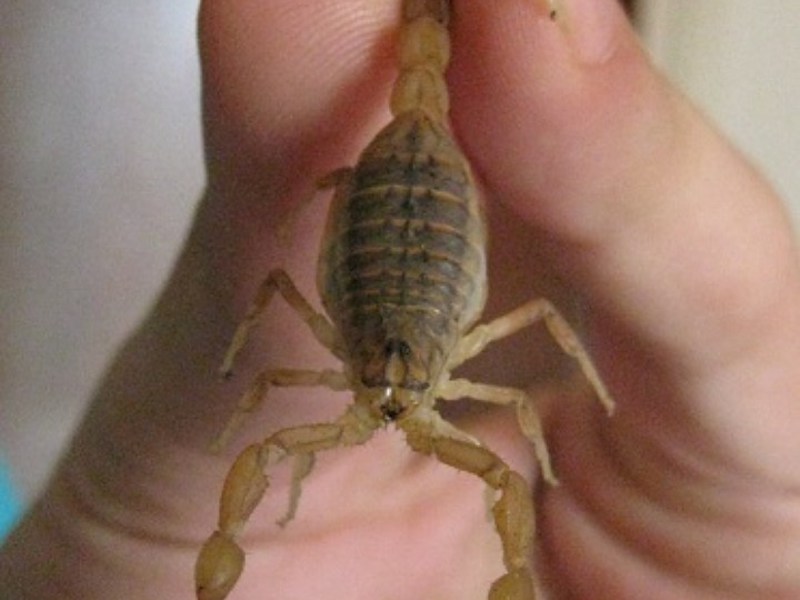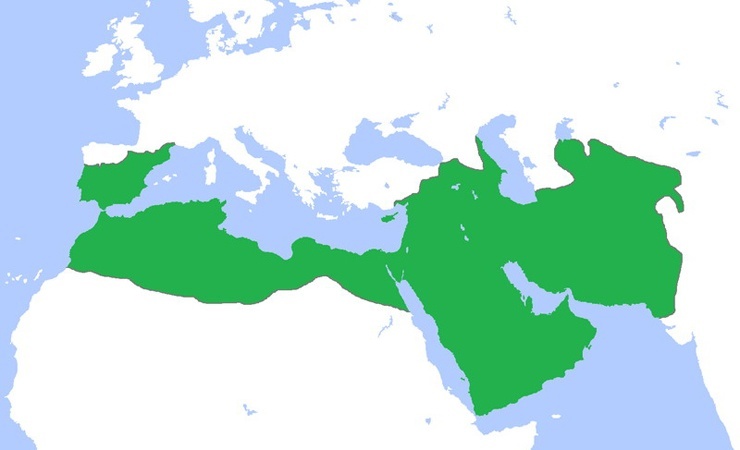Spiders and scorpions are poisonous members of the arachnid class.
Spiders and scorpions are representatives of the most mysterious and little-studied world of arachnids. Almost all types of spiders are poisonous, even brownies. Only those that can bite through the skin cause harm to humans and warm-blooded animals. They account for less than 1%.
In scorpions, on the last segment of the abdomen, there is a pear-shaped telson segment bent over the back. The telson ends with a sharp sting, inside of which is the excretory canal of the poisonous glands.
Arachnids live in hot, arid areas - phalanges. They do not have venom glands. However, the phalanges can bite painfully and infect the wound.
The order of spiders is the most significant of all arachnids - it combines, according to various sources, from 20 to 50 thousand species.
Spiders have a mixed external-internal digestion. They pierce the chitinous cover of the insect with their powerful chelicerae and, together with the digestive juice, inject poison into the body of the prey. The spider can only suck in partially digested food.
Numerous hordes of spiders subdivided into three suborders:
- arthropod spiders;
- tarantula or mygalomorph spiders;
- araneomorphic spiders (orb weaving spiders, tenet spiders, wolf spiders, scow spiders).
For humans and animals, the most dangerous are representatives of the second and third suborders.
Spider species
Spiders-tarantulas. The suborder includes about 2 thousand species - the largest and most dangerous. They live in Africa, Australia, South America. Rare in southern Europe. They are characterized by large sizes - sometimes the leg span exceeds 20 cm. Habitats - rock crevices, tree hollows, soil cracks. They eat insects, small rodents, reptiles and birds, hence the name of the suborder - tarantulas. Neurotoxic poison.
Brown recluse spider. Araneomorph. A striking distinguishing feature - on the dorsal side of the cephalothorax is a pattern in the form of a violin. Lives next to a person - in garages, sheds, basements and attics. Doesn't attack people. Strikes defensively. Lives in the eastern United States.
Funnel spider. Found ubiquitously in Australia. It is considered the most dangerous spider in the world. Feeds on large insects. The poison, when it enters the body, causes tachycardia, an increase in blood pressure.
Phoneutria black-bellied. The South American spider is also one of the most dangerous spiders in the world. Neurotoxic poison. Causes suffocation, paralysis, cardiac arrest. An effective antidote can reduce the number of deaths.
Karakurt. Belongs to the family of pak-tenetnikov. It is found in Central Asia, in the south of Europe, in the Crimea. Poison glands are found only in females. The bite is accompanied by severe pain, which is distributed throughout the body. There is an increase in heart rate, shortness of breath, headache. The abdominal muscles are very tense. For treatment, novocaine, calcium chloride and serum obtained from the poison of karakurt are used.
South Russian tarantula. Belongs to the wolf spider family. Covered with hairs, which can be reddish or almost black. Large - up to 3.5 cm. Habitats - forest-steppes, steppes and deserts. The bite causes localized pain, drowsiness, chills, or excessive sweating.
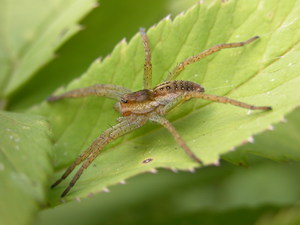 Common cross. From the family of orb-weaving spiders. Distributed throughout Europe and in certain regions of the United States, and even in the Far North. Prefers coniferous forests, upper swamps, edges. Often penetrates houses and sheds. The species got its name because of a distinctive feature - a pattern of white spots in the form of a cross on the dorsal side of the abdomen. A burning pain occurs at the site of the bite. A person experiences general weakness, headache, aching joints.
Common cross. From the family of orb-weaving spiders. Distributed throughout Europe and in certain regions of the United States, and even in the Far North. Prefers coniferous forests, upper swamps, edges. Often penetrates houses and sheds. The species got its name because of a distinctive feature - a pattern of white spots in the form of a cross on the dorsal side of the abdomen. A burning pain occurs at the site of the bite. A person experiences general weakness, headache, aching joints.
Eresus. Habitat - Central Asia, South of Eastern Europe. In males, the orange abdomen has four black spots. The females have a black abdomen. When bitten, the spider pierces the chelicerae deeply and releases large drops of venom. A person experiences a sharp pain at the site of the bite, numbness, difficulty in movement. The components of the poison are not well understood.
Pogrebnoy spider. The abdomen is colored gray with a brown or purple tint. It is found in the Caucasus, in the Crimea, in the Sea of \u200b\u200bAzov. Hiding under rocks, in trees.
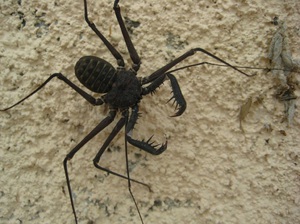 Arachnids are not enemies to people. We are of no interest to them, as long as we do not invade their lives. They bite for one purpose - to defend themselves. In hot weather, their activity increases, the risk of being bitten increases. Spiders are able to measure the size of the intended victim.
Arachnids are not enemies to people. We are of no interest to them, as long as we do not invade their lives. They bite for one purpose - to defend themselves. In hot weather, their activity increases, the risk of being bitten increases. Spiders are able to measure the size of the intended victim.
Large, larger insects and animals frighten them. To develop a portion of poison, you need to expend a lot of effort. Therefore, spiders consume it in a dosed manner. An attacking spider releases just enough venom to hit its prey. When defending, having assessed the threat, he can make a dry bite without releasing poison.
Sometimes dangerous arachnids enter people's homes, hide in shoes or underwear. It has been noticed that most often people were bitten at the time when they went to bed, dressed, sat on the floor or in an armchair, rubbed themselves with a towel after a shower. At the time of the bite, the spider was between the human body and the tissue.
In some species, only females bite, males do not cause significant harm.
Spider bites cause pain of varying severity, anaphylactic shock, secondary infection of the wound, and even death.
Poison falls into two categories:
- Neurotoxic - affects the nervous system, central and peripheral. Pain is weak. There are chills, drowsiness, shortness of breath, hallucinations are not uncommon. Severe pains in the whole body are felt after some time.
- Necrotic - affects the tissues, organs and body systems at the site of the bite, accompanied by severe pain. Significant areas of the skin are affected, anemia, intravascular coagulation, and renal failure are observed.
The number of bites is influenced by factors such as high population density in places where spiders are distributed, the ability to sneak into dwellings.
As an emergency measure necessary:
- introduce antidote serum;
- provide the victim with complete rest and plenty of hot drink;
- apply ice to the bite site;
- treat the wound with an antiseptic;
- seek medical attention.
To prevent bites, it is necessary to check clothes and shoes before dressing, treat the premises with insecticidal preparations, wear gloves and long-sleeved clothing, and destroy cobwebs.
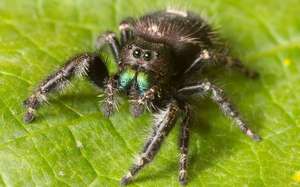 One of the oldest orders of terrestrial arthropods. They live in hot and moderately warm zones of the Earth. Zones with a humid climate, as well as sandy deserts and treeless rocky plateaus, are suitable for them. Hunt mainly at night. Activity increases in hot and windy weather. The source of food is arachnids, insects and their larvae. Scorpions use their venom to immobilize large prey.
One of the oldest orders of terrestrial arthropods. They live in hot and moderately warm zones of the Earth. Zones with a humid climate, as well as sandy deserts and treeless rocky plateaus, are suitable for them. Hunt mainly at night. Activity increases in hot and windy weather. The source of food is arachnids, insects and their larvae. Scorpions use their venom to immobilize large prey.
There are over 1500 species in the world. About 15 species are found on the territory of the former USSR. Among them:
- Italian scorpion (body length up to 5 cm) - lives on the Black Sea coast;
- Mingrelian scorpion - from the shores of the Black Sea it spreads along the banks of rivers in the depths of the mainland;
- Crimean - found on the southern coast of the Crimean Peninsula;
- fat-tailed scorpion - the largest, up to 10 cm long;
- motley scorpion lives in the Volga region, Transcaucasia, Kazakhstan.
Scorpion venom is neurotropic. The toxic proteins contained in it lead to disruption of the action of various systems and organs.
Bite accompanied by severe burning pain, which then fades, then intensifies. Over time, the pain turns into a burning sensation. After 40 minutes, an edema forms at the site of the sting with a clearly visible dark dot in the center of the bite. Blisters with serous filling may form.
The time interval for the onset of symptoms ranges from 5 minutes to 24 hours. The headache grows. Dizziness, convulsive muscle contractions and tremors, tachycardia appear, and blood pressure rises. The victim is excited, may feel fear. Within 20-30 hours, death from respiratory paralysis is likely.
In some cases, after the disappearance of clinical signs of poisoning, a relapse is possible. The victim should be under the supervision of a doctor for at least 12 hours after the disappearance of symptoms.
First aid, treatment and prevention
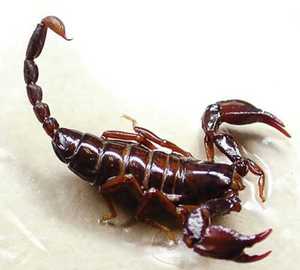 In the first two hours from the moment of stinging the victim inject antidote, a special serum - half the dose intravenously, half subcutaneously. To avoid an allergic reaction, the serum must be injected fractionally. In order to prevent adverse reactions, prednisolone is prescribed. You can also inject a serum made on the basis of the venom of the karakurt spider. Used drugs such as pipolfen, calcium gluconate, glucose, prednisolone, hydrocortisone.
In the first two hours from the moment of stinging the victim inject antidote, a special serum - half the dose intravenously, half subcutaneously. To avoid an allergic reaction, the serum must be injected fractionally. In order to prevent adverse reactions, prednisolone is prescribed. You can also inject a serum made on the basis of the venom of the karakurt spider. Used drugs such as pipolfen, calcium gluconate, glucose, prednisolone, hydrocortisone.
In the absence of qualified assistance, poison is sucked out of the wound, a cooling bandage is applied, and the bite site is treated with antiseptic preparations. The victim needs complete rest.
can hide in the grass, shallow burrow into the sand. Therefore, you must always wear shoes with strong soles. In the habitats of scorpions, you should inspect clothes and shoes, living quarters. Protective nets on windows and doors, sealed gaps in walls and ceilings will protect the house from the penetration of poisonous arthropods.Poisonous arachnids
